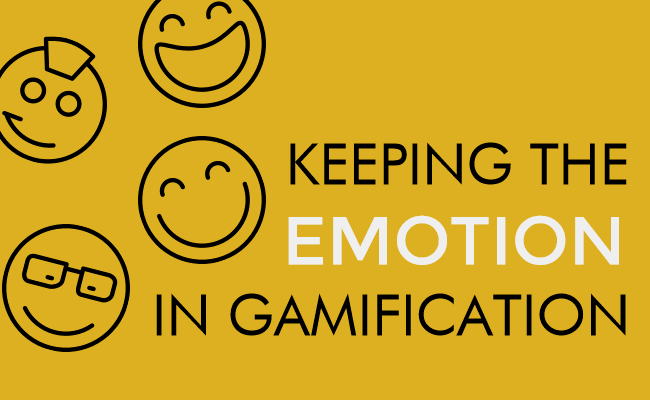When Enterprise Gamification Misses The Point
The other day, one of my Instructional Designer colleagues was telling me about the first time she tried to introduce a game into an employee training program early on in her career. She was met with a big, red rejection stamp. The instructor-led group training was meant to familiarize employees of a pharmaceutical company with some basic scientific concepts related to their field. Much of the content was naturally dry, so, in an attempt to inject some energy and excitement, she adapted a game meant to explain one of the concepts. The game involved participants running around in a type of relay race, and the idea was immediately rejected as unprofessional and unsuitable for the tone the instructors were trying to establish.
She went on to tell me her biggest mistake was trying to add game elements to a course whose basic structure and tone were not conducive to it. Many of the criticisms of enterprise gamification are similar. As Sebastian Deterding writes:
“[P]oints, badges, and leaderboards do not a true game make. What they do make is distraction, confusion, and obsession with ‘fake achievement’.’”
In other words, enterprise gamification has become so hyped that designers sometimes add game elements to courses without considering the overall purpose or contribution of these elements. Despite the consensus that gamification works, gamification in large enterprises often gets a bad rap because it is being applied ineffectively.
The Candle Problem
The Candle Problem originated as a cognitive performance test, but some of its different iterations measured the influence of incentives on problem-solving. Long story short, the study found that offering incentives to perform a task actually decreases creative ability.
Perhaps the same thing is happening when we haphazardly apply gamification elements that act as external incentives. For example, consider the photo sharing app Snapchat. Snapchat recently added “trophies” – small achievements you can unlock when you reach some benchmark.
My question is: Who was asking for these incentives in the first place? Most Snapchat users use the app purely for entertainment, being motivated to share photos by the social aspect. The gamification elements create a sense of competition that obscures the very simple premise that made the app successful.
Getting Emotional
For enterprise gamification to work, companies need to avoid the pitfall of adding gaming elements being used as extrinsic bells and whistles. Rather than using gamification to create a false sense of achievement and competition, training programs should focus on the things that make games work. The idea seems simple, but gamification works because games are meant to be fun. Good games tap into our curiosities: Our desires to explore, investigate, adapt to, and eventually master our surroundings.
Know The Player, Know The Game
As Janaki Kumar writes in her article Five Steps To Enterprise Gamification, “The first step in the player centered design approach is to understand the player and their context”. To really get an understanding of what kinds of emotions a learner is investing in the game, you should get a sense of who they are. What do they know? What do they need to learn? What are their motivations?
Designing gamification elements around a learner rather than implementing artificial elements into an existing course is challenging. It requires foresight, planning, and creative design. However, when a learner’s emotions are taken into account, the result is a much more engaging and enriching experience, and ultimately a greater retention of the skills and concepts being taught.
Find out more about enterprise gamification and other training trends in AllenComm’s eBook #Trending 2016: What worked, what didn’t, and what’s next in training trends.







